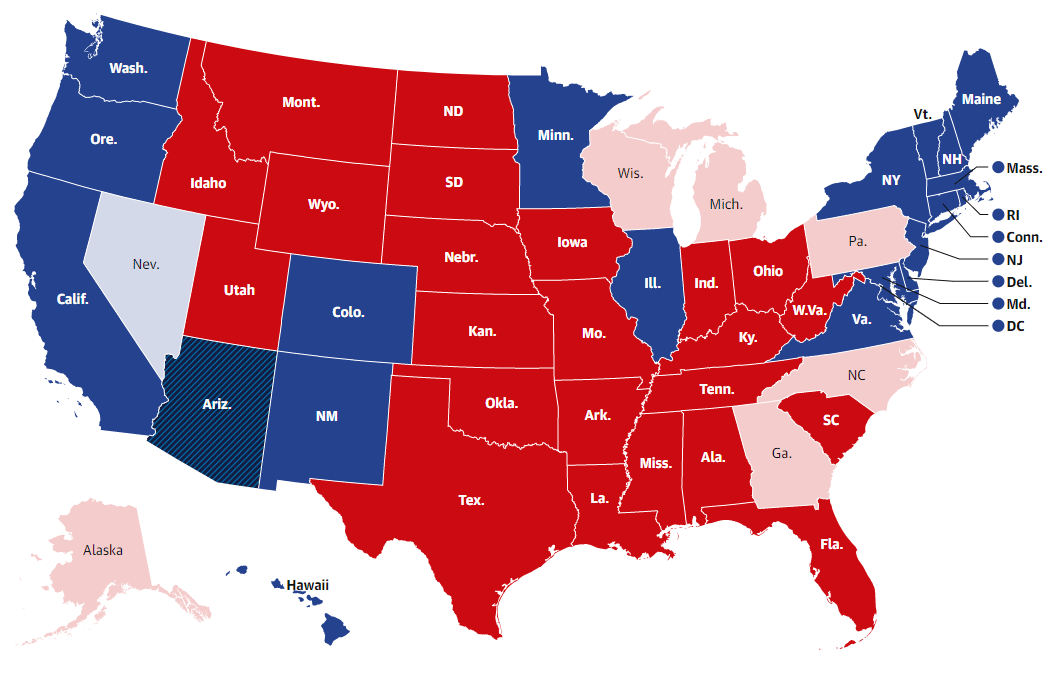If you remember back to 2016, the US Presidential election was one that shocked the entire world.
On one hand, you have Hilary Clinton, once the First Lady and wife to a US President that was quite popular in the country.
And on the other, you have Donald Trump. The guy who’s on The Apprentice and cameo-ed in Home Alone 3.
During the Presidential Election, national polls showed that Hilary Clinton was leading in the Presidential race.
Everyone expected her to win and all data that were collected pointed to Hilary Clinton as the next POTUS.
Yet the election closed with Trump’s 289 electoral votes to Clinton’s 218.
What Went Wrong
According to Scott Keeter, senior survey adviser at the Pew Research Center, national polling was accurate to a large degree.
It was the polls in the states that shifted the victory to Trump that was the issue.

According to Keeter, one thing that was missed out in the 2016 national polling was weighing the education factor.
A look back at the 2016 electorate found that Whites who are more educated made up of 30% of validated voters while White voters who have not completed college made up 44%.
Out of the more educated group, 38% voted for Trump while in the non-college-graduate White people group, Trump won by a landslide at 64%.
Because the 2016 national polling didn’t take into account education level, the massive support for Trump from the more non-educated group was missed.
And so, on voting day, no one expected the droves of non-college-graduates that turned up to cast their votes.
Education Was Key
In the 2016 Presidential Elections, education proved to be the key that determined the direction of votes.
Those who are more educated tend to support Clinton while those, who are less educated, tend to support Trump.
Now, when you add in the fact that people who are more educated are likelier than those who are less educated to take part in surveys and you can understand why the national polls back in 2016 went in the opposite direction.
Not All State Polls Are Created Equal
Most people in the polling profession woke up to the call in the 2016 Presidential Election and acknowledge that education was just as important a criteria as age and gender.
However, knowing it is one thing but adjusting to it is another, according to the American Association for Public Opinion Research (AAPOR).
In their report on the 2016 pollings, AAPOR pointed out that state pollings are usually “under budget” and left up to “individual institutions or universities” which might not adjust well to the new requirements.
The solution, AAPOR suggested, is for survey organisations to come together and finance “high-quality state polls”.
And last, but not least;
People Who Didn’t Know Until The Last Minute (Undecided Voters)
National polling comes before election day and when national polling came, there were many who were still undecided on who to vote for.
One factor that contributed to the larger number of undecided voters back in 2016, 15% of those surveyed, lies solely on the fact that both Clinton and Trump were unpopular candidates for the post.
And in 2016, Trump managed to capture a large number of these undecided voters’ votes at the last minute.
And This Could Repeat Again In 2020
It’s 2020 and Trump’s now defending his title from a new candidate, Joe Biden, but that hasn’t stopped him from being the underdog.
According to BBC, National Polls placed Biden as the favourite to win the election race (Biden’s 52% vs Trump’s 44%) on 2 Nov 2020, one day before the election kicks off in the US.
Here are the polls for the “battleground states” in the US:

Biden is leading massively in a majority of the states, including Arizona, Florida and Pennsylvania.
Meanwhile, Trump did not hold a lead of more than 2% in the states that he led in.
Undecided Voters Seems To Be Key In This Campaign
While there are lesser undecided voters in the 2020 Presidential Election, the results of the election so far show that undecided voters are still keys to victory.
Florida has proven that the presidential hopeful which manages to capture undecided voters’ support may just swing the needle of victory in their direction.

Joe Biden came in at 47.8%, which is close to the national poll of 47.9% for Florida (refer diagram above) but Donald Trump managed to win Florida with 51.3% of the votes, far above the 47% he got during the national polls.
In Arizona, you can see a similar phenomenon happening here, except in the opposite direction.

Trump managed to come in at 46.8% of the votes while Biden came in at 51.8%.

Results Are Still Unclear
As of the time of writing, the election results remain unclear. But suffice to say, based on projected figures, it looks like the 2020 polls are going to be accurate again.
If you were to look at the electoral map provided by The Guardian, you’ll come to realise that in the remaining states, every state has Trump leading in the vote count so far except for Nevada where Biden leads by a healthy 2.3%.

Out of the 7 states where the results haven’t been called yet, four of them had national polls showing Biden as the victor.
So will Trump pull out a second upset against the national polls, giving survey companies in the US another black eye?
What do you think?




